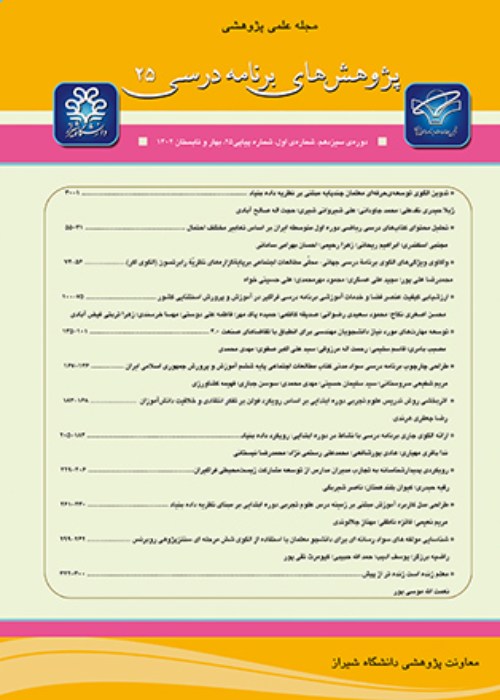A Synthesis of Components and Indicators of Teachers’ Professional Development
Education is the foundation of sustainable human development and is considered the main tool to achieve development goals. Educational systems are regarded as the main pillar of transformation in societies and the major factor in improving human capital. In this context, teachers are the most important agents in the process of curriculum implementation.
Research Questions:
The main research question of this study was as follows: What are the indicators and components of teachers’ professional development?
The present research is a research synthesis, which collated specific factors pertinent to teachers’ professional development as reported in the literature. The reason for using the research synthesis as the study method was that the authors intended to integrate various research findings. In some cases, a research synthesis is referred to as a qualitative metaanalysis aimed at analyzing a relevant body of literature and integrating the results while resolving the potential contradictions in it. It also identifies key issues for future research (Hedges & Cooper, 2009) and creates generalizations by combining the results of experimental research (Khorasani, 2014). Content analysis was used for data synthesis. Furthermore, open, axial, and selective coding procedures were performed to examine the collected data. This study adopted Roberts’ (1983) six-stage model of research synthesis to analyze the findings. These stages included the followings: 1- identifying and clarifying the needs, 2- searching the related sources to retrieve studies, 3- selecting, refining, and organizing studies, 4- determining the perceptual framework and adapting it to the information obtained, 5- processing, combining, and interpreting the results, and
The results showed that the professional development of teachers required many changes at the individual, organizational, planning, and challenges to the professional development levels and that these four levels/dimensions are interconnected. To achieve the goal of improving human resources in education, teachers’ professional development in all these four dimensions requires the adoption of a trans-organizational and national perspective. In the individual dimension, the components of teachers’ professional development revolved around motivational axes, individual dimensions effective, teachers’ interactions, and the characteristics of teacher educators. In the organizational dimension, teachers’ professional development included four indicators, namely, supervision and evaluation of professional development programs, managerial approach and the components of human resources management, the support of professional development activities in the organization, and provision of a suitable career path in the organization providing the possibility of promotion and professional development of teachers. The planning dimension comprised attention to knowledge management in educational organizations, the use of self-directed and individual approaches (e.g., individual action research), and participatory approaches in teachers’ professional development (e.g., use of mentoring and coaching approaches). Finally, the challenges to the professional development dimension entailed defective need analysis, challenges to planning training courses, economic challenges, accessibility, the development of personal and social skills, and the use of new tools, including social networking platforms (e.g., Twitter) and online platforms) in professional development.
Improving teacher quality plays a pivotal role in improving education. Paying attention to teachers’ professional development, as a means to improving human resources in educational organizations, is one of the crucial strategies in human resources management in government organizations. The professional development includes formal and informal learning experiences that teachers acquire from the beginning of their careers to the time of retirement. Professional development of teachers is critical to improving educational systems. This is of great importance to, in particular, the Iranian education system, which suffers from numerous fundamental weaknesses in the area of human resources management. According to the above findings and discussion, it can be stated that teachers’ professional development, as a process, does not depend on only one of the above-mentioned four dimensions. It is hoped that the core dimensions, along with their associated components, presented in this study can provide the basis for improving the current models of professional development and developing new alternatives.
- حق عضویت دریافتی صرف حمایت از نشریات عضو و نگهداری، تکمیل و توسعه مگیران میشود.
- پرداخت حق اشتراک و دانلود مقالات اجازه بازنشر آن در سایر رسانههای چاپی و دیجیتال را به کاربر نمیدهد.




